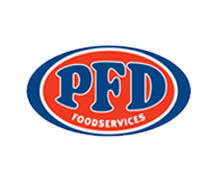Best, worst, and average case analysis
Best, worst, and average case analysis: In computer science, best, worst, and average case analysis is a method of analyzing algorithms that takes into account the amount of time it takes for an algorithm to run in the best case, worst case, and average case scenarios.
Best, worst, and average case analysis is an important concept in computer science. It is a tool used to evaluate the performance of algorithms given certain input data. By analyzing the running time or memory usage of an algorithm under different conditions, one can gain insights into its effectiveness for solving a particular problem. This article will provide an overview of best, worst, and average case analysis by exploring how it works and when it should be applied.
The purpose of best, worst, and average case analysis is to determine the expected behavior of an algorithm in various scenarios. In doing so, it helps identify potential areas where improvement could be made before launching a project or deploying software solutions. Furthermore, this technique allows developers to compare different approaches to tackling a problem and make informed decisions on which option may be most suitable for their use case.
By studying best, worst, and average cases separately, researchers are able to assess whether an algorithm's performance degrades over time as more data points are added or if there is any variation depending on the type of data being processed. Through careful evaluation of these three concepts together with other parameters such as space complexity and scalability features, developers can ensure that they have chosen the right solution for their system requirements.
What Is Best, Worst, And Average Case Analysis?
Best, worst, and average case analysis is a methodology used to assess the time complexity of an algorithm. It involves analyzing the best-case running time, worst-case performance, and average case complexity of an algorithm. The goal of this type of analysis is to determine how well an algorithm performs in different scenarios based on its input size.
In terms of best case analysis, it focuses on computing the minimum amount of processing time required for any given set of inputs. This results in the best overall performance since there are no unnecessary steps taken. On the other hand, worst case analysis looks at what happens when things go wrong by considering all possible outcomes that can lead to long execution times or even errors. Finally, average case complexity considers the expected outcome from a large variety of inputs which will help identify potential bugs or slowdowns in algorithms with complex data sets. In sum, these three approaches provide valuable insight into assessing and improving an algorithm’s efficiency regardless of its input size while identifying opportunities for improvement where necessary.
Examples Of Best, Worst, And Average Case Analysis
Best, worst, and average case analysis is a method of evaluating the performance of an algorithm in terms of its time complexity. It involves determining the upper bound for the worst case execution time as well as the average case execution time based on different possible inputs to an algorithm. This type of analysis can be applied to any problem that requires searching or sorting through data structures such as arrays and linked lists.
For example, when considering the linear search problem, best, worst, and average case analysis looks at how long it takes to find a target element depending on where it is located within an input array. If we assume that all elements are randomly distributed across the array then this would represent an average-case scenario.
In contrast, if we assume that the target element is always in either the first or last position of the array then this would represent a worst-case scenario with an upper bound determined by calculating a worst-case execution time. Similarly, if we assume that our target element is always found somewhere in between these two positions then this would represent a best-case scenario which could have better performance than both cases previously mentioned.
By studying different types of data distributions and analyzing each possible input condition separately while having knowledge about the structure of our algorithms, one can effectively determine how much time it will take for their program to execute under various conditions. Best, Worst and Average Case Analysis helps us understand precisely how fast our code runs under different scenarios so that developers can make improvements accordingly and optimize their programs for maximum efficiency no matter what kind of input they receive from users.
Benefits Of Best, Worst, And Average Case Analysis
Best, worst, and average case analysis are important tools in complexity analysis as they allow for the analysis of algorithms and their running times. In particular, these methods provide insight into the performance of an algorithm under different scenarios.
By performing a best case analysis one can determine the lower bound on the time taken by an algorithm to complete its task. On the other hand, worst case analysis gives us information about how much time is needed for an algorithm to run when it experiences instability or has inputs that produce particularly bad results - such as with unstable sorting algorithms. Average case analysis then provides a more general overview of what happens under normal conditions.
The main benefits of assessing algorithms using best, worst, and average case analyses is that researchers can get a better understanding of which strategies work well in certain situations. This knowledge allows them to make informed decisions when selecting suitable approaches for their applications.
Additionally, this type of assessment offers a more comprehensive view than simply relying on asymptotic analysis alone without considering any real-world scenarios where performance may be impacted by factors outside of theoretical bounds. Ultimately, best, worst, and average case analyses offer valuable insights into the true complexities associated with various algorithms so that developers have greater confidence in implementing solutions that will ensure steady and reliable performance over time.
Challenges Of Best, Worst, And Average Case Analysis
Best, worst, and average case analysis is a useful tool in problem-solving. It allows for the evaluation of various scenarios in order to identify potential challenges or opportunities. This type of analysis can be utilized when working with sorting algorithms, linear search, merge sort, linked list data structures, insertion sort, bubble sort, quick sort and heap sort.
However, best, worst and average case analysis also brings certain challenges. For example, it requires accuracy when defining the parameters that will be analyzed. If incorrect parameters are used then this could lead to inaccurate results which may not provide an accurate picture of what needs to be done.
Additionally there is often ambiguity between the different cases being evaluated due to changing conditions and variables within each one. As such it can become difficult to determine which course of action should be taken based on these factors alone.
This highlights the importance of having reliable data sources as well as a thorough understanding of binary search techniques and other relevant concepts in order to make informed decisions when utilizing best, worst and average case analysis for problem solving purposes.
Applications Of Best, Worst, And Average Case Analysis
Best, worst, and average case analysis are essential tools for assessing the performance of computing algorithms. Each have their own unique applications and can be used to optimize runtime and program efficiency. For instance, merge sorting is a widely-used algorithm that benefits from best and worst case analysis in order to determine which array values should be compared first. This helps to minimize the number of comparisons necessary for sorting the array.
Worst case analysis also has practical applications outside of computer science. In network revenue management problems such as finding the minimum cost per unit distance or allocating hub locations, it can be used to identify where resources must be allocated most efficiently given a certain set of constraints. Additionally, random matrices can benefit from an average case approximation ratio when estimating time complexity for particular operations within a matrix structure. By combining these three types of analysis, researchers gain significant insight into how systems will perform under varying conditions.
Key Takeaways From Best, Worst, And Average Case Analysis
Best, worst and average case analysis is a powerful tool used to analyze the total number of operations required for various algorithms. It helps in understanding which algorithm will be more efficient when applied to real-time applications such as sorting an array or determining space complexity of matrix anal. This type of analysis can also be applied to NP complete problems like revenue management model, management science, genetic algorithms, fuzzy control models etc.
The key takeaways from best, worst and average case analysis are that it gives us insight into how well each algorithm performs under different conditions and provides guidance on which one should be used for optimizing performance. We can also use this technique to compare two or more algorithms and determine which one is better suited for particular tasks. Furthermore, we can use it to understand the tradeoffs between time and memory usage when dealing with complex problems. Finally, analyzing the best-case scenario allows us to optimize our code by reducing redundant calculations so that our program runs faster while operating within desired parameters.
Conclusion
Best, worst, and average case analysis is a useful tool for decision-makers to consider the potential outcomes of their decisions. It helps them understand how different scenarios could unfold and provides insight into what measures need to be taken in order to achieve desired results.
By examining best, worst, and average cases separately, decision-makers can gain an understanding of the risks and rewards associated with a particular course of action. This allows them to make informed choices that are tailored according to the specific needs of each situation.
The benefits of this type of analysis include being able to identify opportunities and plan accordingly while also preventing costly mistakes due to lack of foresight or inadequate planning. Additionally, it can provide valuable insights on which strategies may yield better results than others based on previous experiences or data collected from similar contexts. Finally, by understanding both positive and negative implications ahead of time, one can adjust their strategy accordingly in order to maximize success rates.
In conclusion, best, worst, and average case analysis is an effective way for decision-makers to anticipate possible outcomes and help them map out optimal paths forward more confidently. With its ability to analyze multiple scenarios simultaneously and help pinpoint areas where improvements are needed most effectively, it offers invaluable guidance when making difficult decisions that have far-reaching consequences.
PREVIOUS NARROW AI GLOSSARY TERM
NEXT NARROW AI GLOSSARY TERM
Best, Worst, And Average Case Analysis Definition
Exact match keyword: Best, Worst, And Average Case Analysis N-Gram Classification: Best case analysis, Worst case analysis, Average case analysis Substring Matches: Best, Worst, Analysis Long-tail variations: "Best Case Scenario Analysis", "Worst Case Scenario Analysis", "Average Case Scenario Analysis" Category: Management & Operations, Business Search Intent: Information, Research Keyword Associations: Risk Management, Decision Making Semantic Relevance: Risk Assessment, Decision Making Processes, Cost Benefit Analysis Parent Category: Business Subcategories: Risk Management, Decision Making Synonyms: Risk Assessment, Decision Making Processes Similar Searches: Cost Benefit Analysis, Strategic Planning Geographic Relevance : Global Audience Demographics : Business Professionals , Students , Researchers Brand Mentions : McKinsey , Deloitte , BCG Industry-Specific Data : Risk Return Profile , Market Performance Ratios Commonly Used Modifiers : "Scenario" , "Process" , "Analysis" Topically Relevant Entities : Risk Assessment , Decision Making Processes , Cost Benefit Analysis , Strategic Planning."Larry will be our digital expert that will enable our sales team and add that technological advantage that our competitors don't have."
Kerry Smith
CEO, PFD Foods
$1.6 billion in revenue 
"Lion is one of Australasia’s largest food and beverage companies, supplying various alcohol products to wholesalers and retailers, and running multiple and frequent trade promotions throughout the year. The creation of promotional plans is a complicated task that requires considerable expertise and effort, and is an area where improved decision-making has the potential to positively impact the sales growth of various Lion products and product categories. Given Complexica’s world-class prediction and optimisation capabilities, award-winning software applications, and significant customer base in the food and alcohol industry, we have selected Complexica as our vendor of choice for trade promotion optimisation."
Mark Powell
National Sales Director, Lion
"At Liquor Barons we have an entrepreneurial mindset and are proud of being proactive rather than reactive in our approach to delivering the best possible customer service, which includes our premier liquor loyalty program and consumer-driven marketing. Given Complexica’s expertise in the Liquor industry, and significant customer base on both the retail and supplier side, we chose Complexica's Promotional Campaign Manager for digitalizing our spreadsheet-based approach for promotion planning, range management, and supplier portal access, which in turn will lift the sophistication of our key marketing processes."
Richard Verney
Marketing Manager
Liquor Barons

"Dulux is a leading marketer and manufacturer of some of Australia’s most recognised paint brands. The Dulux Retail sales team manage a diverse portfolio of products and the execution of our sales and marketing activity within both large, medium and small format home improvement retail stores. We consistently challenge ourselves to innovate and grow and to create greater value for our customers and the end consumer. Given the rise and application of Artificial Intelligence in recent times, we have partnered with Complexica to help us identify the right insight at the right time to improve our focus, decision making, execution, and value creation."
Jay Bedford
National Retail Sales Manager
Dulux

"Following a successful proof-of-concept earlier this year, we have selected Complexica as our vendor of choice for standardizing and optimising our promotional planning activities. Complexica’s Promotional Campaign Manager will provide us with a cloud-based platform for automating and optimising promotional planning for more than 2,700 stores, leading to improved decision-making, promotional effectiveness, and financial outcomes for our retail stores."
Rod Pritchard
Interim CEO, Metcash - Australian Liquor Marketers
$3.4 billion in revenue 
"After evaluating a number of software applications and vendors available on the market, we have decided to partner with Complexica for sales force optimisation and automation. We have found Complexica’s applications to be best suited for our extensive SKU range and large set of customers, being capable of generating recommendations and insights without burdening our sales staff with endless data analysis and interpretation.
Aemel Nordin
Managing Director, Polyaire
"DuluxGroup is pleased to expand its relationship with Complexica, a valued strategic partner and supplier to our business. Complexica’s software will enable DuluxGroup to reduce the amount of time required to generate usable insights, increase our campaign automation capability, personalise our communications based on core metrics, and close the loop on sales results to optimise ongoing digital marketing activity."
James Jones
Group Head of CRM, DuluxGroup
"Instead of hiring hundreds of data scientists to churn through endless sets of data to provide PFD with customer-specific insights and personalised recommendations, Larry, the Digital Analyst® will serve up the answers we need, when we need them, on a fully automated basis without the time and manual processes typically associated with complex analytical tasks.”
Richard Cohen
CIO, PFD Foods
$1.6 billion in revenue 
"As a global innovator in the wine industry, Pernod Ricard Winemakers is always seeking ways to gain efficiencies and best practices across our operational sites. Given the rise of Artificial Intelligence and big data analytics in recent times, we have engaged Complexica to explore how we can achieve a best-in-class wine supply chain using their cloud-based software applications. The engagement is focused on Australia & New Zealand, with a view to expand globally."
Brett McKinnon
Global Operations Director, Pernod Ricard Winemakers
"70% - 80% of what we do is about promotional activity, promotional pricing -- essentially what we take to the marketplace. This is one of the most comprehensive, most complex, one of the most difficult aspect of our business to get right. With Complexica, we will be best in class - there will not be anybody in the market that can perform this task more effectively or more efficiently than we can."
Doug Misener
CEO, Liquor Marketing Group
1,400+ retail stores 
"The key thing that makes such a difference in working with Complexica is their focus on delivering the business benefits and outcomes of the project."
Doug Misener
CEO, Liquor Marketing Group
1,400+ retail stores 
"Australia needs smart technology and people, and it has been a great experience for me to observe Complexica co-founders Zbigniew and Matt Michalewicz assemble great teams of people using their mathematical, logic, programming, and business skills to create world-beating products. They are leaders in taking our bright graduates and forging them into the businesses of the future."
Lewis Owens
Chairman of the Board, SA Water 
"Having known the team behind Complexica for some years ago now, I am struck by their ability to make the complex simple - to use data and all its possibilities for useful purpose. They bring real intelligence to AI and have an commercial approach to its application."
Andrew McEvoy
Managing Director, Fairfax Media - Digital 
"I have worked with the team at Complexica for a number of years and have found them professional, innovative and have appreciated their partnership approach to delivering solutions to complex problems."
Kelvin McGrath
CIO, Asciano 
“Working with Complexica to deliver Project Automate has been a true partnership from the initial stages of analysis of LMG’s existing processes and data handling, through scoping and development phase and onto delivery and process change adoption. The Complexica team have delivered considerable value at each stage and will continue to be a valued partner to LMG."
Gavin Saunders
CFO, Liquor Marketing Group 
“Complexica’s Order Management System and Larry, the Digital Analyst will provide more than 300 Bunzl account managers with real-time analytics and insights, to empower decision making and enhanced support. This will create more time for our teams to enable them to see more customers each day and provide the Bunzl personalised experience.”
Kim Hetherington
CEO, Bunzl Australasia 
"The team behind Complexica develops software products that are at the cutting edge of science and technology, always focused on the opportunities to deliver a decisive competitive edge to business. It has always been a great experience collaborating with Matthew, Zbigniew and Co."
Mike Lomman
GM Demand Chain, Roy Hill Iron Ore 
"The innovations that the Complexica team are capable of continue to amaze me. They look at problems from the client side and use a unique approach to collaborating with and deeply understanding their customers challenges. This uniquely differentiates what they bring to market and how they deliver value to customers."
John Ansley
CIO, Toll Group 
"Rather than building out an internal analytics team to investigate and analyse countless data sets, we have partnered with Complexica to provide our sales reps with the answers they need, when they need them, on a fully automated basis. We are excited about the benefits that Larry, the Digital Analyst will deliver to our business.”
Peter Caughey
CEO, Coventry Group 
“Complexica’s Order Management System and Larry, the Digital Analyst will provide more than 300 Bunzl account managers with real-time analytics and insights, to empower decision making and enhanced support. This will create more time for our teams to enable them to see more customers each day and provide the Bunzl personalised experience.”
Kim Hetherington
CEO, Bunzl Australasia 
"After an evaluation process and successful proof-of-concept in 2016, we have chosen to partner with Complexica to upgrade the technological capability of our in-field sales force. The next-generation Customer Opportunity Profiler provided by Complexica will serve as a key tool for sales staff to optimise their daily activities, personalise conversations and interactions with customers, and analyse data to generate actionable insights."
Stephen Mooney
Group Sales Capability Manager, DuluxGroup
$1.7 billion in revenue
"After evaluating a number of software systems available in the marketplace, we have ultimately selected Complexica as our vendor of choice for sales force automation and CRM. Given the large SKU range we carry and very long tail of customers we serve, Complexica’s applications are best suited to deal with this inherent complexity without burdening our staff with endless data entry."
Nick Carr
CEO, Haircaire Australia
Australia's largest distributor of haircare products
“Asahi Beverages is Australia’s largest brewer, supplying a leading portfolio to wholesalers and retailers, including some of Australia’s most iconic brands. Last year Asahi Beverages acquired Carlton & United Breweries, which is its Australian alcohol business division. To harness the strength of our expanded portfolio, we partner with our customers to run multiple and frequent trade promotions throughout the year, delivering long-term growth for both our business and theirs. Given the inherent complexity in optimising promotional plans and our continued focus on revenue and growth management, we have selected Complexica as our vendor of choice after a successful Proof-of-Concept of its world-class optimisation capabilities.”
Kellie Barnes
Group Chief Information Officer
Asahi Beverages
"Dulux is a leading marketer and manufacturer of some of Australia’s most recognised paint brands. The Dulux Retail sales team manage a diverse portfolio of products and the execution of our sales and marketing activity within both large, medium and small format home improvement retail stores. We consistently challenge ourselves to innovate and grow and to create greater value for our customers and the end consumer. Given the rise and application of Artificial Intelligence in recent times, we have partnered with Complexica to help us identify the right insight at the right time to improve our focus, decision making, execution, and value creation."
Jay Bedford
National Retail Sales Manager, DuluxGroup
"At Liquor Barons we have an entrepreneurial mindset and are proud of being proactive rather than reactive in our approach to delivering the best possible customer service, which includes our premier liquor loyalty program and consumer-driven marketing. Given Complexica’s expertise in the Liquor industry, and significant customer base on both the retail and supplier side, we chose Complexica's Promotional Campaign Manager for digitalizing our spreadsheet-based approach for promotion planning, range management, and supplier portal access, which in turn will lift the sophistication of our key marketing processes."
Richard Verney
Marketing Manager, Liquor Barons


































